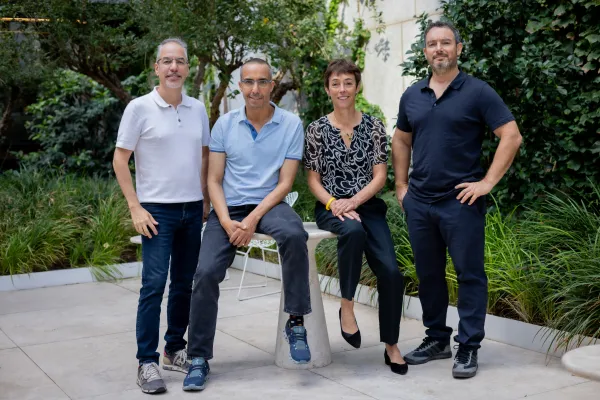Go ahead, blame Richard Fairbank for your junk mail. Much of it, anyway.
As the principal architect of credit card come-ons -- the low teaser rates, balance transfers and other special offers -- the innovative CEO of Capital One Financial Corp. forever changed a once-staid industry. Competitors carped, then followed his lead, clogging America's mailboxes. His shareholders celebrated all the way to the bank: Since Capital One was spun off by Signet Banking Corp. in 1994, the company's mix of sophisticated data mining, customized products and savvy branding has propelled its stock market value higher by a stratospheric 1,500 percent, to more than $23 billion. That's seven times the gain of the Standard & Poor's 500 index during the same period.
Now the 55-year-old onetime management consultant is taking on another business that he sees as ripe for reengineering. After years of beating lumbering commercial banks at the credit card game, Fairbank is invading the rest of their turf. In November 2005 he bought New Orleansbased Hibernia National Bank for $5 billion. Last month he followed with the $14.6 billion purchase of Melville, New York's North Fork Bancorp. The deals mark a major push into businesses like home, auto and education lending for McLean, Virginiabased Capital One. More acquisitions are likely, as Fairbank seeks to be a long-term consolidator of the fragmented U.S. banking business.
But the new version of Fairbank's company -- call it Capital Two -- may not be as easy to construct as the first. Already, Fairbank has hit some snags. Just as he was set to close the Hibernia deal in the summer of 2005, Hurricane Katrina devastated that bank's home territory, prompting a $186 million charge against its earnings and trimming the sale price by $400 million (see box). No sooner had Fairbank set his sights on North Fork and its big mortgage unit than the U.S. housing market began to slump, threatening the broader economy and consumer lending generally. Mortgage origination in the U.S. fell by 16 percent during the first half of 2006, and a flat-to-inverted yield curve is squeezing banking industry margins. North Fork's earnings fell 14 percent in the third quarter, strongly disappointing Wall Street.
As a result, Capital One's shares have dropped 12 percent since the North Fork deal was announced in March and now trade at about 9.4 times estimated 2007 earnings. That's down from a forward P/E of 11 one year ago and lower than those of bigger, more diversified competitors like JPMorgan Chase & Co. (11.8), Citigroup (11.4), Wachovia Corp.(11.1) and Bank of America Corp. (10.5).
"They shouldn't have bought North Fork so close on the heels of Hibernia and with the impending changes in the mortgage business," says Credit Suisse analyst Moshe Orenbuch. "In the short term it was executed in a way that hurt the shareholders."
Fairbank is well aware of the dangers his strategy brings. He built Capital One, after all, by measuring and pricing risk better than any card issuer had previously. He professes to have made a similar calibration regarding the future of the company.
"We clearly took more short-term risk," he tells Institutional Investor, "for the long-term benefit of doing a transformational deal."
Fairbank's best alternative may have been to sell Capital One, the nation's fifth-biggest card issuer, as reduced margins make the card business ever more dependent on economies of scale. That's certainly the option the company's credit-card-focused rivals, known as monolines, took during the past two years as they sold out to big diversified banks. In October 2005, Providian Financial Corp. was bought by Washington Mutual for $6.1 billion. Two months later Metris Cos. was picked up by HSBC Group for $1.6 billion. And last January the biggest stand-alone card company, MBNA Corp., was bought by BofA for $34.2 billion. Amid all that deal making, Wachovia was said to be interested in Capital One, then the second-biggest of the monolines, though neither company will discuss the subject.
The wave of consolidation was triggered by slowing growth in cards as consumers paid off balances and used plastic less after a decadelong binge. Revolving consumer credit outstanding in the U.S., a measure often used as a proxy for total credit card debt, stands at $863 billion, according to Federal Reserve Board data. That's up 21 percent over the past five years, well below the 37 percent expansion seen from 1996 to 2001. Capital One's earnings grew 18 percent in 2005 after an average annual gain of 35 percent in the previous three years.
Compared with the slowdown in cards, less consolidated, faster-growing consumer lending businesses are looking more promising to Fairbank. Areas like auto and home lending are growing at an average of 7 percent or more per year, compared with just 3 to 4 percent for cards. He's hopeful that Capital One can successfully cross-sell its cards to Hibernia and North Fork customers while convincing existing cardholders to do their banking with the company.
More broadly, Fairbank, who believes that banking, like the credit card business, will be dominated by a handful of big national players instead of an array of local entrants, sees a great strategic play. Today the top ten players in cards claim 85 percent of the industry's revenue, according to Piper Jaffray & Co. research; in banking they control only 67 percent, estimates S&P.
"For the small number of players who position themselves as a consolidator, there's a very significant growth opportunity here," says Fairbank.
With his regional bank acquisitions, Fairbank is keen to pursue that opportunity. Capital One (or Two) is a far stronger, far more diverse company, with cards accounting for just 51 percent of income, down from 80 percent before the deals. The combined company has $54 billion in deposits, making it the nation's 13th-biggest bank by that measure. (It is 11th by market capitalization, at $23.6 billion.) With North Fork's 353 New York metropolitan area branches, Capital One ranks No. 3 in that deposit-rich market. North Fork's Greenpoint Financial unit is a national mortgage and home equity lender. Hibernia dominates banking in Louisiana but also provides a beachhead in fast-growing Texas, where it has 108 branches. And the bank deposits Capital One has acquired are a cheaper source of funding for new loans than the asset-backed bonds it historically has relied on. That should enable the company to aggressively grow both deposits and loans by offering more-attractive rates.
Fairbank is wasting little time putting his stamp on the banking business as he pours in resources. In April he rebranded all of Hibernia's branches under the Capital One name. He has also doubled the pace of branch openings in Hibernia's territory, to 40 per year, focusing on the Texas market.
Starting this month the banking business will be run by exNorth Fork CEO John Kanas, a savvy operator -- and an experienced consolidator in his own right (he integrated 15 acquisitions during his 29 years running that bank). Kanas is weighing an acceleration of branch-building in the New York area. He also plans to rebrand North Fork locations as Capital One in 2008, a move he hopes will help leverage North Fork's relationship-driven, small-business lending franchise into the consumer arena.
"Capital One and Rich are very scientific," says Kanas. "[North Fork] and I are more artful. This is the classic blend of art and science."
The bigger promise of Capital One's transformation is the possibility that Fairbank will bring the same kind of innovation to banking that he has used to reshape credit cards over nearly two decades. "What'll make or break these deals is whether Capital One adds any value to the branch banking business," says Thomas Brown, head of Second Curve Capital, a hedge fund focused on financial services that counts Capital One among its five biggest holdings. "I guarantee you they'll do something different in banking."
IF RICH FAIRBANK THINKS BIG, IT MAY BE BECAUSE he grew up in a family of big thinkers. Both his parents were physicists, and he spent most of his childhood and adolescence in California, where his father, William, a professor at Stanford University, did groundbreaking work associated with superconductivity and relativity. His persistence inspired his son; one experiment that William worked for 40 years to set up wasn't carried out until 2004, five years after his death.
"He was always a great believer in having a passion, having a quest," Fairbank says. "So I've always been passionate about my pursuits."
The younger Fairbank found his passion in finance. He earned an undergraduate economics degree from Stanford and got his MBA there too, in 1981. Hoping to one day run a company, he joined Washington-based consulting firm Strategic Planning Associates, where he worked with several card companies in a rapidly changing environment. Banks for years had fought state usury laws that set low ceilings on loan interest, and during the 1980s many obtained licenses in South Dakota, which permitted them to charge rates in the high teens. Predictably, they flooded the country with their offerings.
Fairbank was struck by the fact that the industry charged all customers the same 19.8 percent rate and $20 annual fee. He thought that if he could gather enough data about cardholder behavior, he could more efficiently price credit risk; that would allow his clients to grow their businesses by offering more-attractive rates to customers who would maintain balances while making regular, on-time payments.
"The vision was to smash the price of credit," Fairbank recalls.
More than 20 big banks rejected the idea developed by Fairbank and Nigel Morris, his colleague at the consulting firm. Finally, in 1988, Signet Bank hired them to revamp its small, regional card business. Fairbank threw himself into recruiting, persuading Signet to pay top graduates in math and statistics the same as veteran bank vice presidents. His team crunched consumer and credit data, then tested a variety of products through direct-mail marketing, offering different rates and annual fees based on consumers' creditworthiness.
"This required a great deal of investment on the part of Signet, new technology and different kinds of people than we had before," says Malcolm McDonald, who was vice chairman of Signet at the time. "Rich is brilliant at recruiting people."
The big breakthrough came in 1992, when Signet offered to transfer balances from competing cards at a 9.8 percent annual rate -- an industry first. Other card companies were innovating at the time, notably MBNA with its affinity cards. But none cracked credit pricing the way Signet did. The bank's card portfolio promptly began to balloon, nearly doubling in size annually; from $2.2 billion at the end of 1992, it soared to $7.38 billion by the end of 1994. Soon the rest of the card industry began copying its strategy.
But other card issuers, notably Bank One Corp. and First Chicago, couldn't perfectly replicate Signet's statistical models for teaser rates and higher credit limits and stumbled into high delinquency levels, says Frank Martien, a partner at First Annapolis Consulting, a credit card consulting firm. Fairbank wasn't simply taking more risk by extending lower-rate credit; he was more precisely pricing that risk to maximize returns and minimize defaults.
"Rich Fairbank is a very conservative lender," explains McDonald, who is retired now but still a Capital One shareholder.
By 1994, Fairbank's card division was generating half of Signet's earnings and growing far faster than its parent, prompting the decision to spin it off as Capital One in November of that year. (Signet has since become part of Wachovia.) Fairbank became chairman and CEO of the newly public entity, with Morris as president and chief operating officer. The pair cultivated a freewheeling, entrepreneurial culture that differed from the way most banks did business. Fairbank encouraged a bottom-up approach to developing ideas, which the data-analysis group would then evaluate. He and his team continued refining their data mining, which fed their direct-marketing machine. By the late 1990s, Capital One was conducting more than 25,000 market tests a year. It meticulously researched which customers responded to an annual fee, what rates produced customer accounts with the highest risk-adjusted returns and even what size envelopes worked best in direct-mail offers. It also regularly stress-tested its portfolio of loans to see how it would perform in a recession.
To be sure, there were slipups along the way. Early on, Fairbank viewed Capital One less as a financial services firm than as a data-driven marketer. So in 1995, looking to apply his data-crunching strategy to other fields, the CEO led the company into the cellular phone service business. Technology and telecommunications were booming. Fairbank, describing mobile phones as "credit cards with antennae," thought he could position Capital One as a reseller of cell phone minutes. But the business, called America One, suffered from being a small player at a time when the cost of wireless service was dropping and big competitors were better able to reduce prices. It bled red ink, losing $57 million in the first half of 1999 alone. Fairbank shuttered the business in 2000, selling some of its accounts to Sprint Corp.
"It was too tall an order for us. It was a strategic failure on my part," Fairbank says. That convinced him to stick to consumer finance.
But on the whole, Capital One expanded faster, with fewer hiccups than most of its competitors. It grew credit card loans outstanding from $10 billion in 1995 to $105 billion in 2005. Net income rose from $95.3 million in 1994, Capital One's first year as an independent company, to $1.8 billion in 2005.
Along the way, it managed its risk exceptionally well. Capital One aims for lower average card balances than do other big card issuers, to minimize defaults. In 2005 its U.S. card business charged off just 5 percent of loans, trailing only Wachovia's card unit.
"They have been better at managing credit risk than many of their peers," says A.G. Edwards & Sons equity analyst David George.
WHETHER FAIRBANK'S BANKing strategy can succeed depends on how well he and Kanas merge their businesses and navigate worsening industry conditions. It's a delicate task. Capital One is diversifying into higher-growth but lower-margin businesses. Cards generate a 2 percent return on assets, compared with 1.1 percent for home equity loans, 0.9 percent for small-business loans and 0.5 percent for mortgages. With Hibernia and North Fork, Capital One expects to get 4 to 6 percent of revenues from mortgages, according to its CFO, Gary Perlin. That's a higher level of exposure to this slowing market than that of big-bank rivals. JPMorgan gets just 2 percent of revenues from mortgages. At Citi the figure is less than 1 percent.
Melding Hibernia and North Fork smoothly into Capital One will be critical. So far Fairbank has set broad goals like rebranding branches and opening new ones more rapidly, but he has let Hibernia chief Herb Boydstun and his senior management team have a free hand in day-to-day management. Kanas will have the same level of automnomy now that he is taking over.
"Day to day, developing products and dealing with the recovery -- nobody in McLean is thinking about that. That's our responsibility," says Paul Bonitatibus, the company's head of Louisiana banking and a 34-year Hibernia veteran. "It's definitely not micromanagement."
A clear benefit is that Capital One has gained access to deposits as a cheaper source of funds. Going forward, deposits will account for a little more than half of its funding, says CFO Perlin, with securitizations accounting for about one third. (Securitizations now cover nearly 50 percent.) Deposits are typically about 200 basis points cheaper than other funding options. Moody's Investors Service raised Capital One's senior unsecured debt rating two notches, to Baa1 from Baa3, when the Hibernia deal closed. Standard & Poor's upgraded its rating to BBB from BBB in May. This means that even the company's securitizations can now be done on more-favorable terms. "That benefits all our funding," says Perlin.
Better financing terms mean fatter margins on the company's credit card lending, which will help it build market share in Texas and New York by offering loans and deposit accounts with more-attractive rates than those it offered in the past. Hibernia was already the second-fastest-growing bank in the Dallas and Houston metro areas, behind only BofA, before Capital One accelerated its expansion. Relying more on interest-rate-sensitive deposits will also diversify risk, making the firm less dependent on funds subject to credit risk.
"In many ways this is a marriage made in heaven," says Lehman Brothers analyst Bruce Harting, referring to the North Fork purchase. "Capital One's core competency is being an outstanding credit underwriter, but it's not comfortable taking on interest rate risk. North Fork's core competency is taking interest rate risk but not credit risk."
In buying North Fork, Fairbank also gains one of regional banking's most savvy managers. With Morris having retired in 2004, Kanas, 60, becomes one of Fairbank's key deputies (he's also on the board of directors). A cautious, no-nonsense executive who keeps costs low, Kanas has carved out a profitable niche in New York between small and giant banks. After reaping a $105 million payday on the deal, he certainly doesn't need to stay at Capital One. But he has committed to stick around for three years.
"Kanas is a great operator," says James Dunne, head of investment bank Sandler O'Neill & Partners, who helped advise the CEO on the Capital One deal. "He's smart, and he's decisive."
Another key will be cross-selling, a much-sought-after but rarely attained goal for financial giants like Citigroup and American Express Co. Capital One has had some success in this realm: Before its bank acquisitions, it mined its credit card customer base to help build up the small auto-finance business it purchased in 1998 into a growing profit maker, notes Credit Suisse analyst Orenbuch. Capital One fans believe the company could make some headway, based in part on the brand it has built with its staggering advertising spending: $352 million in 2005, far more than BofA ($209 million) and JPMorgan ($210 million), though dwarfed by Citi ($588 million), according to Advertising Age.
"That's a strength of theirs -- leveraging that brand," says Orenbuch.
Over the longer term Capital One will need to keep buying banks and building scale to compete with industry giants. Fairbank won't say when he'll go back on the acquisition trail, but there's no guarantee that Capital One won't be gobbled up before then. Even though just ten U.S. banks have bigger market values, including BofA, Citi, JPMorgan, Wachovia and Wells Fargo & Co., most are so big that acquiring Capital One wouldn't be a huge bite. Other potential suitors include foreign banks looking to expand in the U.S. If the short-term damage that Fairbank says he's willing to tolerate in exchange for long-term benefit winds up being too severe, it could further depress Capital One's stock and make it more vulnerable to takeover. Some shareholders see that fate as inevitable.
"They're not in a position where they need to sell, but I still consider it a takeover candidate," says Peter Kovalski, manager of the Alpine Dynamic Financial Services fund, a big Capital One shareholder.
Fairbank insists that he only looks to create long-term value. "We don't operate with a mission of staying independent," he says. He also takes comfort in his track record: "I have 18 years of experience competing against the big players."
The CEO's supporters, like Second Curve's Brown, are counting on him to bring to the banking industry a little of the magic he has applied to credit cards over the past two decades. Fairbank himself says that banking is "ripe for reinvention" but is purposefully vague when pressed about his plans for applying his data-mining and mass-marketing techniques to traditional bank deposits and loans, careful not to promise too much.
Others are less sanguine, saying it won't be easy for Capital One to innovate in the more-established banking business.
"When Fairbank came up with his credit card ideas, they really were different. But people have been doing banking for a long, long time," says Mark Giambrone, a portfolio manager at Barrow Hanley Mewhinney & Strauss, which owns about 4 percent of Capital One. "I think their business mix will be better than most banks'. But they're not going to revolutionize banking."
Coping with the perfect storm
Capital One Financial Corp. had nearly completed the first step in its transformation from a stand-alone credit card company into a diversified bank when the perfect storm hit. Literally. On August 29, 2005, just a few days before Capital One was set to close its planned $5.4 billion acquisition of New Orleansbased Hibernia National Bank, Hurricane Katrina ravaged the city and the surrounding region, rendering 120 of Hibernia's 317 branches inoperable. Three weeks later, Hurricane Rita struck western Louisiana and Texas, forcing the bank to evacuate and temporarily close an additional 60 branches.
Katrina, the costliest natural disaster in U.S. history, displaced nearly half of Hibernia's 6,500 employees, including Louisiana banking chief Paul Bonitatibus, who lived for seven months in hotels and motels after his home in Jefferson Parish was flooded. Hibernia put hundreds of other employees up in temporary housing while it went about the tough work of rebuilding. The bank took a $186 million charge in the third quarter for hurricane-related costs, net of $47.9 million in insurance claims. On September 7, Capital One renegotiated the purchase price down by 7 percent, to $5 billion. The deal closed in November 2005.
Today all but 15 Hibernia branches have been reopened. Ten of those are still being renovated, but five are beyond repair. Although rebuilding costs are on pace to total more than $190 million, exceeding initial expectations of about $175 million, the company says the merger is still on track to generate cost savings and additional revenues worth $135 million in 2007.
A big question mark is whether the long-term impact of the storm will depress economic growth in the region and act as a drag on Capital One's banking business. Initially, the bank enjoyed an influx of some $4.6 billion in new deposits from Hibernia customers, thanks to insurance claims and federal aid grants. But as customers withdraw funds to rebuild homes and businesses, deposits have begun to shrink -- from $37.7 billion at the end of the first quarter of 2006 to $35.7 billion at the end of the third quarter.
"At some point we anticipate that those funds will be spent, but the question is how," says Bonitatibus, who expects that the injection of aid money for rebuilding will stimulate the local economy and help spark loan growth. "Some level of those deposits are going to stick to this economy for some time. It won't all go away."
In the meantime, Hibernia executives are trying to reap the benefits of being part of the larger Capital One, namely greater resources with which to expand in the fast-growing Texas market as well as opportunities to cross-sell Capital One's and Hibernia's financial products. Hibernia branches have been rebranded as Capital One, and Bonitatibus has tapped his new employer's deeper pockets to improve customer service, hiring 100 support staff in Louisiana. "The legacy of the storm," he says, "is the care that was given to our employees, as well as to our customers." -- L.F.





